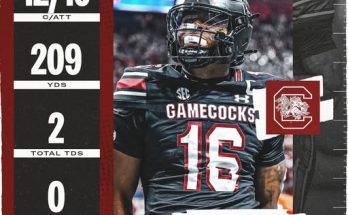Phil Steele’s 2025 forecast for the Texas Longhorns paints a compelling, full‑scale portrait of a squad brimming with potential yet navigating key transitions. He ranks Texas No. 2 in the SEC and No. 3 nationally among 136 teams, underscoring a belief that the Longhorns, despite shifts, remain powerhouse contenders. Central to Steele’s projection is a defense he deems “arguably the nation’s top” ([si.com][2]), a claim backed by overwhelming continuity: Texas returns six defensive starters and bolsters its defensive tackle rotation via several impact transfers . That structural integrity feeds into strength Steele trusts will dominate the field.
On offense, however, Steele tempers enthusiasm with caution. Texas must usher in the Arch Manning era under center—a move rich in pedigree but short on collegiate experience . Manning’s ascension from backup to signal‑caller bookends a landmark decision: replace Quinn Ewers, who passed for 3,479 yards with 22 touchdowns and just six interceptions in 2024 . While Ewers augmented Manning’s development, the handover introduces a question mark. Steele flags “limited experience” as a personal concern despite the “potential … to get there” . National consensus echoes this—On3 labels Manning “the next great generation of Manning QBs” but tempers with reality: “no QB transition is perfectly seamless” ([cfbhourglass.com][5]).
Still, the offensive foundation appears strong. A dominant offensive line, though retooling its front, returns multiple starters. Athletic bench pieces like Trevor Goosby are set to plug open roles seamlessly. Importantly, names like Emmett Mosley V, DeAndre Moore Jr., Ryan Wingo, and freshman standout Kaliq Lockett promise dynamic receiving options . At tailback, Quintrevion Wisner delivers versatility—he rushed for 1,064 yards and five touchdowns in 2024 while adding 311 yards receiving ([athlonsports.com][3]). Steele acknowledges this balanced offense yet emphasizes the line’s youth and Arch’s adjustment period as reasons he’s hesitant to rank Texas at the pinnacle .
Defensively, there’s far less doubt. Steele’s assessment of Texas’ defensive front is emphatic: elite talent across defensive ends, linebackers, and secondary creates a formidable unit. Colin Simmons emerged with 9 sacks in 2024 to earn freshman All‑American honors and looks to “set a precedent akin to Micah Parsons 2.0” ([reddit.com][7]). Anthony Hill Jr. is even more revered—Steele calls him possibly the “best linebacker in the country,” highlighting 16.5 tackles for loss and 8 sacks in 2024 ([athlonsports.com][3]). Texas also replenished its defensive line via portal acquisitions such as Cole Brevard, Travis Shaw, Hero Kanu, and Lavon Johnson. Secondary stalwarts like Michael Taaffe, Jelani McDonald, Malik Muhammad, and Jaylon Guilbeau, despite the departure of Jahdae Barron, offer reliability and playmaking .
These returning pieces integrate strategically under coordinator Pete Kwiatkowski and co-defensive coordinator Johnny Nansen, whose revamped schemes significantly strengthened the back end. Kwiatkowski’s steady presence and Nansen’s scheme upgrades—moving toward tighter man coverage—solidify this unit as a true national-class defense . Analysts agree: following losses of premier defensive linemen in 2023, the Longhorns not only maintained defensive dominance, they thrived—their pass defense, previously subpar, soared to near elite status .
Steele’s preseason power poll places Texas behind Penn State and Notre Dame but ahead of Alabama and Ohio State, which suggests his confidence in the Horns rolls beyond conference borders. Moreover, he slots Texas No. 2 in the SEC, bested only by perennial juggernaut Georgia . That latter ranking reinforces the notion that Texas belongs in that elite tier, just waiting to prove it on the field.
Steele also emphasizes special teams and depth. Texas snagged Utah punter Jack Bouwmeester and kicker Mason Shipley to address postseason nerves and field-position battles. Return man Ryan Niblett offers another spark on changeups. With 12 starters returning on defense, 3 on offense, and 2 on special teams ([en.wikipedia.org][8]), continuity might trump youth. But the turnover in key offensive and line roles requires experienced coaching to ensure fluid execution. Steele acknowledges this, seeing the Horns as “not flawless, but loaded” across units .
Concerning the schedule, Athlon, SaturdayBlitz, and others note that while Texas kicks off with a brutal opener at Ohio State, its non‑conference and mid‑season stretch is favorable—all before a tough road trip to Georgia ([saturdayblitz.com][9]). Steele sees those early matchups as confidence-builders for Manning and the offense—critical for momentum in October and November.
Steele also warns of potential stumbling blocks: the quarterback transition, offensive-line youth, and playing true road dates early and mid‑season. He notes that even a star defense won’t guarantee championships without consistency at quarterback . That said, the bright side remains that Texas’s redesign is largely complete and youth—especially on the O-line—will mature rapidly with reps.


